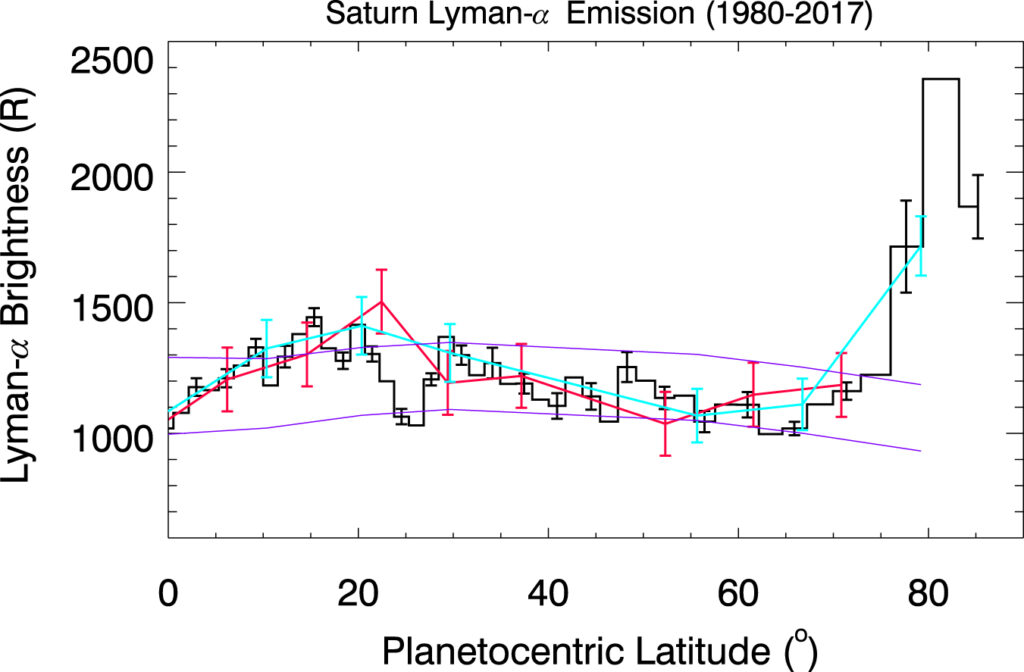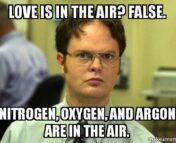Title: The enigmatic abundance of atomic hydrogen in Saturn’s upper atmosphere
Authors: L. Ben-Jaffel, J. Moses, R. A. West, K-M. Aye, E. T. Bradley, J. T. Clarke, J. B. Holber, G. E. Ballester
First Author’s Institution: Sorbonne Universités, UPMC Univ Paris 6 & CNRS, UMR 7095, Institut d’Astrophysique de Paris, 98 bis bd Arago, F-75014 Paris, France; University of Arizona, Lunar & Planetary Laboratory, Tucson, AZ, USA
Status: Published in PSJ [open access]
This post was written in conjunction with this history of Saturn’s cultural impact!

Why do we care about Saturn,
other than the simple yet profound motivation of understanding our neighbors in the Solar System and our role in this group? In order to explain this, let’s take a step back and look at the entirety of the Milky Way (should be easy, right?). The most common exoplanet type in our galaxy is the sub-Neptune — aptly named because they are planets slightly smaller than Neptune. Exoplanet astronomers theorize that the abundance of sub-Neptunes is an artifact of these planets being born with larger hydrogen atmospheres that were lost over time. It turns out that a lot of those exoplanets which may be losing their atmospheres in such a way are close in size and mass to our very own Saturn. But with a teeny tiny twist. They orbit their Suns in a few days.
A. Few. Days.
To put this into context, Saturn orbits the Sun every 30ish Earth years! So, Saturn = far away from the Sun = cold. These Saturn-like exoplanets = super close to their Suns = wicked hot. That brings us back to the evaporation, which is potentially caused by this closeness and the energy the exoplanet is bombarded with.
Exoplanet astronomers aren’t just curious about this process because it sounds cool (or hot), or because we’re narrowing down which planets are habitable . This evaporation process could theoretically have influenced a significantly large portion of the exoplanets in the Milky Way (aka, the sub-Neptunes), leaving its fingerprints in the pie that is our current knowledge of the exoplanet population.
Now, back to Saturn. Because these exoplanets are much like Saturn in size and mass, astronomers believe they are also composed very similarly to Saturn. Then it follows that if we’d like to know more about the atmospheres of these exoplanets (minus the energy deposition from their host stars), then we should look at our own, somewhat, neighbor Saturn. That’s exactly what our authors intended to do!
A Hydrogen Flashlight
The authors looked at Saturn in the ultraviolet through the lens of Cassini, the Hubble Space Telescope, and Voyager 1 — all mammoth missions in their own right. The particular region of the ultraviolet they were focused on was the Lyman-alpha emission line at 121.5 nanometers — or the light/photons that very readily, and I mean readily, interact with neutral hydrogen. Because of this, astronomers can use the presence or absence of Lyman-alpha light around certain objects to determine how much neutral hydrogen exists and how it behaves. This is particularly exciting for the aforementioned exoplanet astronomers who are looking to observe and characterize the evaporating upper atmospheres — often containing hydrogen — of many planets outside our Solar System.
Circling back to Saturn. Again. The authors studied simultaneous Hubble and Cassini Lyman-alpha observations of Saturn to learn more about its upper atmosphere’s hydrogen content, which helps us understand more about the atmospheres of similar exoplanets. Figure 1 shows an image of Saturn in the near-ultraviolet and Figure 2 shows the total brightness of Saturn’s dayside in Lyman-alpha as a function of planetary latitude. There is a distinct bump of about 30% in Lyman-alpha brightness present between 5 – 35 degrees North in latitude for both the August and September data the authors looked at. As shown in Figure 2, the bump is consistent for three different instruments at three different times. The authors dub this brightness the “Lyman-alpha bulge”, but I will refer to it as Saturn’s Lyman-alpha tutu from here on out.

The Physics of Light
The authors invoke the tried and true physics of radiative transfer — the equations that govern light absorption, emission, and scattering. The particular model they used incorporated tracking how incoming sun- and background-light would scatter off of Saturn’s atomic hydrogen, Rayleigh scattering with Saturn’s molecular hydrogen, and that light being absorbed by water and hydrocarbon molecules (particularly methane). Interplanetary hydrogen floating around within the Solar System can absorb some of this light, which was also taken into account.
The radiative transfer model was combined with a photochemical model to output the temperature and density of the atoms. They found that more hydrogen than would be expected is required at all latitudes within the thermosphere to reproduce the Lyman-alpha tutu observed at higher altitudes.
Which watering can is hydrating Saturn?
What could be causing this excess of hydrogen throughout Saturn’s atmosphere?
- Geysers from Enceledaus are known to contribute water to Saturn’s rings. Could it be that Enceladus also waters Saturn itself?
- There could be an exchange of material between Saturn and its rings, although observations have never seen enough water transfer between the two to make up for the amount needed to explain the Lyman-alpha tutu.
- Saturn’s aurora could also donate some material enhancement down to 50 degrees North in latitude, but, like the other contributors, it is likely not enough.
The authors propose that including some or all of the contributions above, along with the addition of ion chemistry, material mixing, or maybe even some thermospheric turbulence, could create the Lyman-alpha brightness reported in today’s paper.
There are three key takeaways from this work:
- Observations of the outermost regions of planetary atmospheres can tell us something about what’s going on underneath.
- Giant planet atmospheres can be significantly impacted by the exchange of material with nearby moons and rings.
- The upper atmospheres of even Solar System planets, what’s in them and how they behave remain highly uncertain.
Astrobite edited by Archana Aravindan
Featured image credit: NASA/JPL-Caltech/Space Science Institute/Gordan Ugarkovic; modified by Keighley Rockcliffe.




